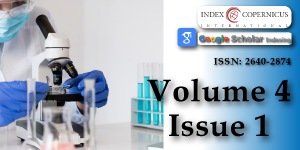Uterine precursor lesions in patients with incidental nodal lymphangioleiomyomatosis: A report of 4 cases
Main Article Content
Abstract
Uterine sections from 6 patients with incidental nodal lymphangioleiomyomatosis (LAM) were examined for LAM lesions by screening these sections with cathepsin K immunohistochemistry (IHC) stains. The hysterectomy specimens were all concurrent with the lymph node dissections in which the nodal LAM was discovered. In 4 of 6 patients microscopic lesions of pre-LAM were identified and confirmed by IHC staining for HMB-45 and beta-catenin. All lesions were grossly inapparent and also inapparent by routine hematoxylin and eosin stains. Three variants of pre-LAM lesions were identified. None of the pre-LAM lesions had an associated lymphatic proliferation. It is proposed that these pre-LAM lesions gave rise to the incidental nodal LAM lesions. Furthermore, it is suggested that the absence of an associated lymphatic proliferation associated with these lesions may be a factor in the attenuated potential for spread and the only rare association of these nodal lesions with pulmonary LAM.
Article Details
Copyright (c) 2020 Lombard CM.

This work is licensed under a Creative Commons Attribution 4.0 International License.
Schoolmeester JK, Park KJ. Incidental nodal lymphangioleiomyomatosis is not a harbinger of pulmonary lymphangioleiomyomatosis: a study of 19 cases with evaluation of diagnostic immunohistochemistry. Am J Surg Pathol. 2015; 39: 1404-1410. PubMed: https://www.ncbi.nlm.nih.gov/pubmed/26135558
Rabban JT, Firetag B, Sangoi AR, Post MD, Zaloudek CJ. Incidental pelvic and para-aortic lymph node lymphangioleiomyomatosis detected during surgical staging of pelvic cancer in women without symptomatic pulmonary lymphangioleiomyomatosis or tuberous sclerosis complex. Am J Surg Pathol. 2015; 39: 1015-1025. PubMed: https://www.ncbi.nlm.nih.gov/pubmed/25786086
Kuno I, Yoshida J, Shimizu H, Uehara T, Uno M, et al. Incidental lymphangioleiomyomatosis in the lymph nodes of gynecologic surgical specimens. Eur J Ob Gynec Reprod Biol. 2018; 231: 93-97. PubMed: https://www.ncbi.nlm.nih.gov/pubmed/30336310
Hayashi T, Kumasaka T, Mitani K, Terao Y, Watanabe M, et al. Prevalence of uterine and adnexal involvement in pulmonary lymphangioleiomyomatosis: a clinicopathologic study of 10 patients. Am J Surg Pathol. 2011; 35: 1776-1785. PubMed: https://www.ncbi.nlm.nih.gov/pubmed/22020043
Lombard CM. Microscopic precursor lesions of uterine lymphangioleiomyomatosis associated with incidental nodal lymphangioleiomyomatosis. A case report and discussion of pathogenesis. Hum Pathol Case Rep (in press).
Flavin RJ, Cook J, Fiorentino M, Bailey D, Brown M, et al. Beta-Catenin is a useful adjunct immunohistochemical marker for the diagnosis of pulmonary lymphangioleiomyomatosis. Am J Clin Pathol. 2011; 135: 776-782. PubMed: https://www.ncbi.nlm.nih.gov/pubmed/21502434
Kumasaka T, Seyama K, Mitani K, Sato T, Souma Sm et al. Lymphangiogenesis in lymphangioleiomyomatosis: its implication in the progression of lymphangioleiomyomatosis. Am J Surg Pathol. 2004; 28: 1007-1016. PubMed: https://www.ncbi.nlm.nih.gov/pubmed/15252306
Gyure KA, Hart WR, Kennedy AW. Lymphangioleiomyomatosis of the uterus associated with tuberous sclerosis and malignant neoplasia of the female genital tract: a report of two cases. Int J Gynecol Pathol. 1995; 14: 344-351. PubMed: https://www.ncbi.nlm.nih.gov/pubmed/8598338





